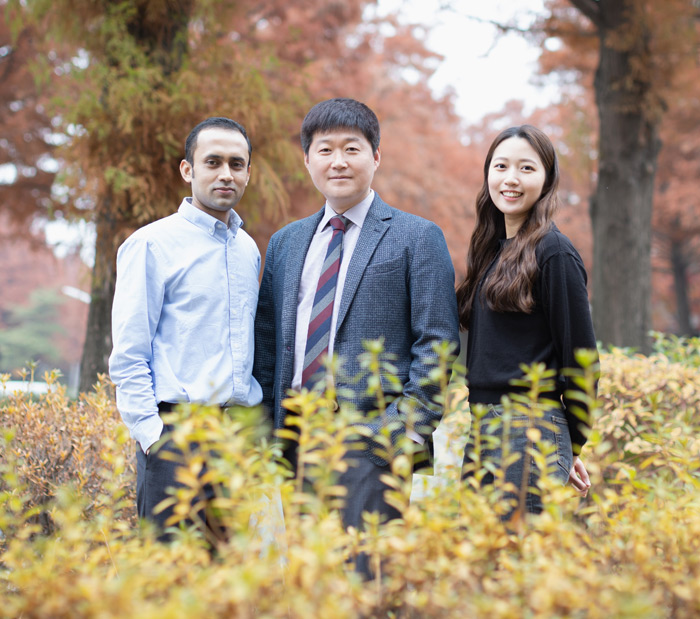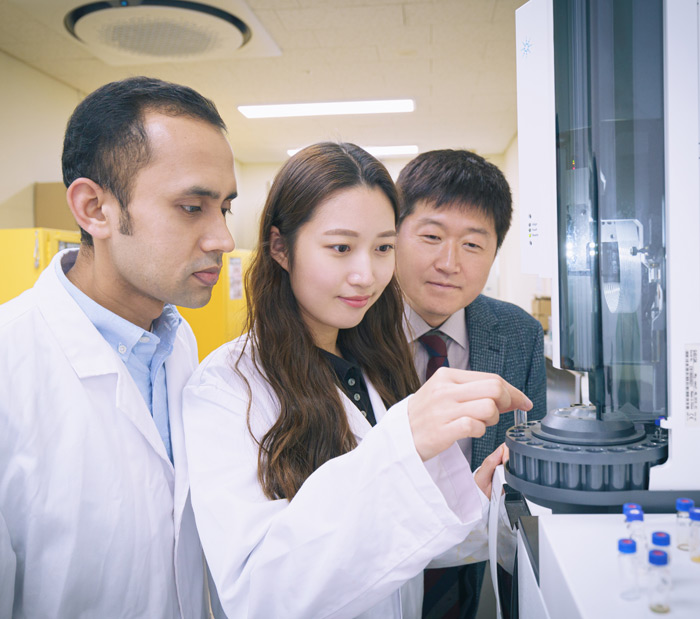Research Stories
Research team led by Professor In-Su Kim at School of Pharmacy, Sungkyunkwan University proposes signals for developing
A research team led by Professor In-Su Kim at the School of Pharmacy of Sungkyunkwan University (President: Dong-Ryeol Shin) has developed a synthetic methodology to selectively transform nucleoside analogs, known as the core structure of antiviral drugs.
Pharmacy
Prof.
KIM, IN SU
A research team led by Professor In-Su Kim at the School of Pharmacy of Sungkyunkwan University (President: Dong-Ryeol Shin) has developed a synthetic methodology to selectively transform nucleoside analogs, known as the core structure of antiviral drugs. The findings were published in the September issue of the online edition of Angewandte Chemie (IF = 12.959), a world-renowned journal in the field of chemistry.
A nucleoside analog is a compound that is designed with an aim to resemble a structural unit of DNA or RNA by modifying the sugar or base which are the basic units of DNA and RNA. Nucleoside analogs because of their inherent characteristics could be absorbed into viral cells and control genomic synthesis and so could be used as an antiviral drug. So far, more than 20 nucleoside analogs have been used to treat various viral infections such as Herpes (HSV), AIDS (HIV), and hepatitis B/C (HBV/HCV). In particular, Remdesivir, which is in the spotlight as new COVID-19 treatment, is also known to contain a nucleoside analog.
In this study, Professor In-Su Kim's research team developed the first synthetic method for selective alkylation of a nucleobase in nucleoside analogue by utilizing easily available sulfur ylide. Previously reported alkylation methods of nucleobase require organic solvents and complex processes involving multiple steps with low chemical reactivity, in turn, resulting in additional production costs and limitations for application in the pharmaceutical industry.
Sulfur ylide is a reagent developed in 1960 by Nobel Prize-winning professor E. J. Corey, which has been used only in the manufacture of trigonal cyclic compounds. Professor In-Su Kim's research team has created an opportunity to showcase the importance of sulfur ylide as an effective reagent to alkylate nucleoside analogs. In this developed synthetic method water or alcohol is used as a reaction solvent that is considered as environmentally green and also largely reduce the production cost.
Professor In-Su Kim said, "The results are new discovery of the reactivity of sulfur ylides for direct functionalization of carbon-hydrogen bonds. In particular, this study has presented a new signal to aid the development of antiviral drugs for human suffering from the new viral infection, and can drastically improve the manufacturing method for nucleoside alkylation compared to the existing multi-stage synthetic process."
This research was conducted with financial support from the National Research Foundation of Korea and the Ministry of Science and ICT (MSIT).
< Picture Description >
Graphic above the green line: A reaction scheme indicating the reaction of nucleoside with sulfur ylide and carbon-hydrogen bond in nucleoside analog to be replaced with an alkyl.
Graphic below green: The reaction of Pyrazinones and Azaracils with sulfur ylide in water or alcohol as solvent does not result in the known cyclic trigonal compounds, but rather brings about alkylation of C˗H bond. Reaction mechanism by path a is suggested by Nobel Prize-winner Professor Corey, and reaction mechanism by path b is the result of the current research. External environmental factors such as substrates, reagents, solvent and temperature are very important to control the reaction pathways a and b. The description in front of the four bullet points summarizes the originality and excellence of the current research work.
< Term Description >
Nucleoside analogues: organic compounds that transforms the phosphoric acid, sugar, and base of DNA and RNA to make it structurally similar to DNA or RNA.
Nucleobase: nitrogen-containing biological compounds that form nucleosides, which, in turn, are components of nucleotides, with all of these monomers constituting the basic building blocks of nucleic acids. The five nucleobases of adenine (A), guanine (G), cytosine (C), thymine (T), and uracil (U) are called primary or canonical.
Sulfur ylides: organic compounds containing negatively charged atoms (carbon anions) within molecules, and negatively charged carbon elements are directly coupled with heterocarbons (sulfur, phosphorus, or nitrogen) that have positive transmission.
Alkylation: organic synthesis that introduces alkyl groups through substitution or addition reactions to organic compounds.


